Red Potentilla: popular varieties, cultivation and care
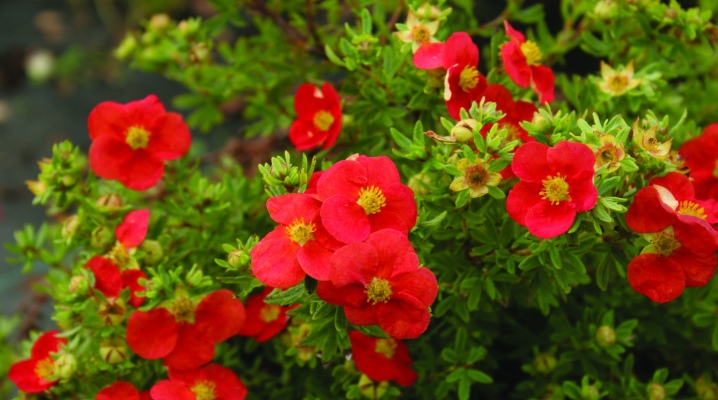
With the arrival of warmth, beautiful decorative flowers bloom in the garden plots. One of the favorites of the dacha "vegetation" is a perennial called Potentilla. Varieties with blood-red flowers have a special charm. A shrub or herbaceous plant does not require careful maintenance and can easily endure harsh winters.
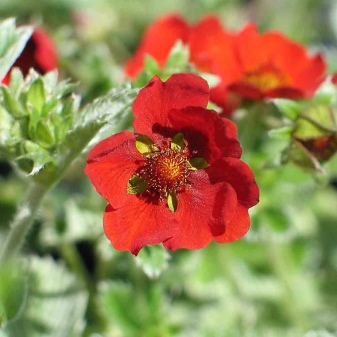
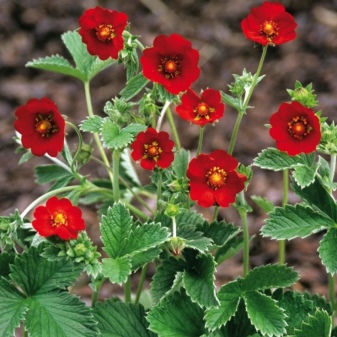
Description and distinctive features
Cinquefoil (Potentilla) belongs to the Pink family, which is one of the largest in terms of the number of species. The shrub is also called "Kuril tea" or "five-leafed leaf". There is an old belief according to which the epic hero won the victory thanks to the smell of an amazing plant. Namely, the brave Ilya Muromets, getting ready for a fight with the Nightingale the Robber, breathed in the aroma of Kuril tea and felt unprecedented strength.
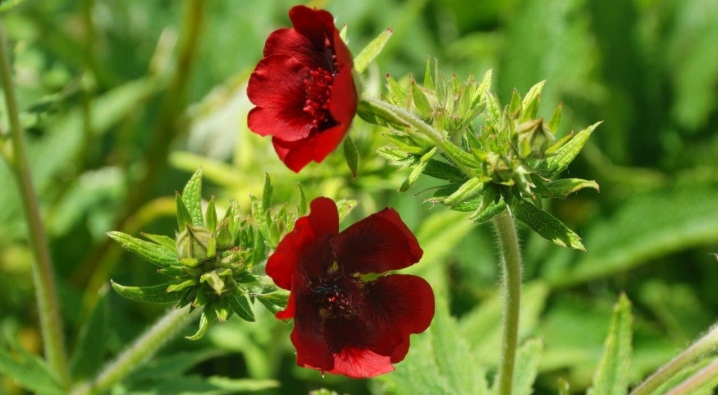
Indeed, an amazing plant is not only a decoration for a garden plot, but also has various medicinal properties. Cinquefoil is widely used by traditional healers. Translated from the Latin language, Potentilla means "strength" and "power".
In nature, there are several types of plants: shrub, undersized, herbaceous and tall. All varieties will be able to decorate the garden plot. However, the undoubted favorite among the decorative flowers is red cinquefoil.
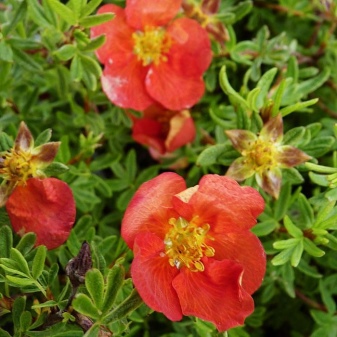

Popular varieties
There are several types of Kuril tea with scarlet flowers. The most popular variety is "Marion red robin".
The features of this plant are as follows:
- compact rounded crown;
- leaves of a light green shade (with the onset of autumn - turn yellow);
- inflorescences are dark red.
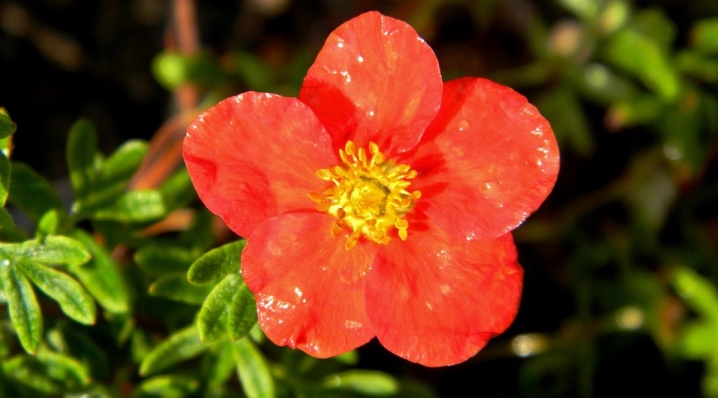
Marion Red Robin blooms from June to mid-September. Numerous miniature inflorescences consist of scarlet petals and a yellow center. In the center of the shrub, the color of the flowers is much brighter than in the lower part. Under the influence of direct sunlight, the plant does not lose its rich shade. However, by the end of summer, the color may become darker. With the onset of autumn, the formation of fruits (prefabricated seeds) begins.
This variety is widely used in landscape design. Blood red flowers look beautiful both in single plantings and in group compositions. A beautiful bright plant is often planted in containers, periodically changing its "habitat". This variety prefers sunny places, so the red cinquefoil planted in the shade will not please its owner with abundant flowering.

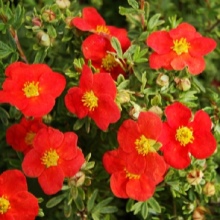
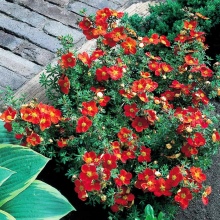
It is no less popular among gardeners variety with red flowers "Ace"... It is a miniature shrub cinquefoil whose leaves resemble paws. Terry petals are colored bright red. However, over time, the flowers take on a light orange tone. In addition, the color of the inflorescences of this variety depends on the air temperature. With the arrival of cold weather, the inflorescences become dark red. The flowering period is from June to October. In overly arid areas, "Ace" does not bloom, as it prefers humidified air. In addition, this bush cinquefoil is highly frost-resistant.
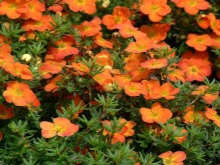
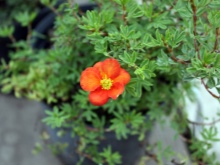

Another variety with blood-red inflorescences is called Gibson Scarlet... This perennial has branched stems and purple buds with a glossy sheen. The variety blooms from June to October.Gibson Scarlet herbaceous cinquefoil prefers open light areas and is unpretentious in care. The plant looks great in group plantings, and also in harmony with other garden flowers.


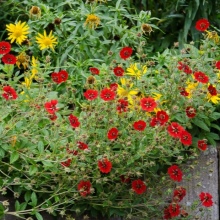
Continuing the conversation about red cinquefoil, do not forget about a beautiful variety with an interesting name "Joker"... Shrub cinquefoil is distinguished by very delicate shoots, and reaches a height of 1 meter. The plant is famous for its lush spherical crown, which is covered with red-orange flowers. In the sultry summer, the shade of the inflorescences becomes lighter. The Joker prefers breathable, fertile soils. The flowering intensity of a given plant will depend on the quality of the soil. The variety is known for its drought tolerance.
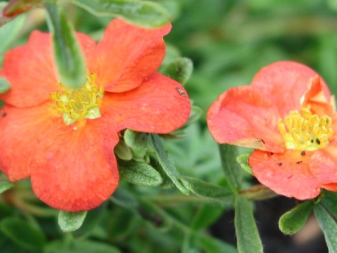
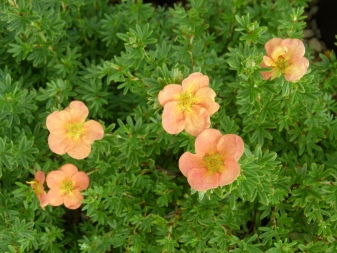
Planting and growing rules
Red Potentilla is planted in spring, when the snow has "melted" and the soil has warmed up. Also, the plant is transplanted in the first half of autumn, before the onset of frost.
The area should be light, but light partial shade is still allowed.
The fact is that under the direct rays of the sun, the bright red hue will lose its saturation and become dull.
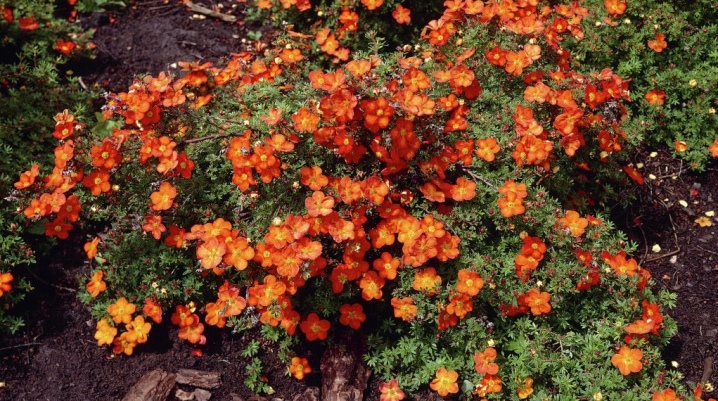
The process of planting Potentilla itself is simple.
- We dig a planting hole 50-60 cm deep. For group planting, the distance between seedlings should be within 30-40 cm.
- Lay out a drainage layer on the very bottom of the pit. Broken brick or small pebbles will do.
- Mix the soil with sand and mineral fertilizer, filling the hole with this mixture.
- We plant a seedling and sprinkle it with earth. The root part should be flush with the soil surface.
- Water the plant abundantly and do not forget about mulching. For these purposes, dry foliage, sawdust or straw are suitable.
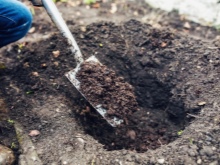

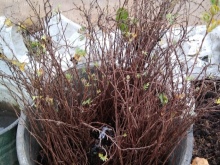
Red cinquefoil propagates by cuttings, dividing a bush or using seeds.
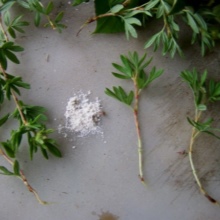

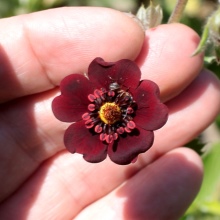
Care
Despite its unpretentiousness, Kuril tea needs weeding actions, regular watering, feeding and removing weeds.
In hot summer, the soil is moistened 2-3 times a week. The water should be at room temperature.
In order to keep the soil moist, a process of mulching with pine bark or compost is performed.
Besides, red cinquefoil loves to "take a shower" on summer evenings... Dry air is undesirable for this plant.


As for feeding, phosphorus and potash fertilizers are suitable for red Potentilla, which are preferably applied in the spring. Kuril tea is cut in late autumn (October-November). This procedure allows you to give the perennial a beautiful aesthetic appearance, and also stimulates abundant flowering.

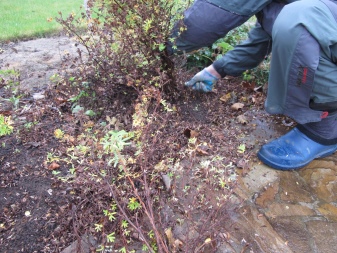
The most delicate varieties, for example "Joker", need shelter in winter. For these purposes, special bags made of "breathable" material are perfect.

Diseases and pests infect red cinquefoil quite rarely. However, such an ailment as "rust" is still inherent in it. This disease manifests itself in the form of dark spots on the foliage of the plant, which over time dries up and falls off. In this case, the cinquefoil is treated with a special emulsion.
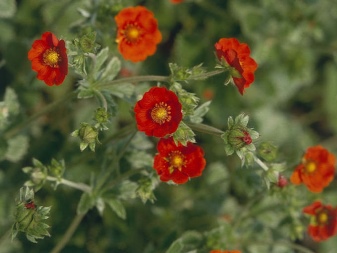

For even more important information about different varieties of red cinquefoil, see the video.



































































The comment was sent successfully.